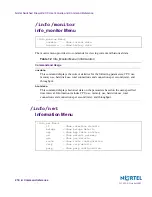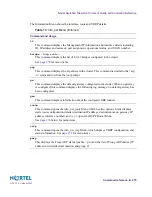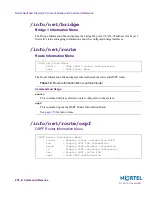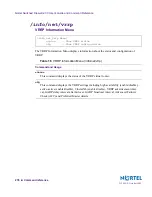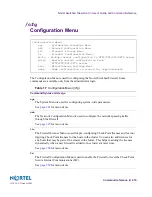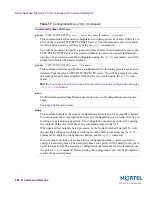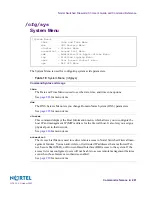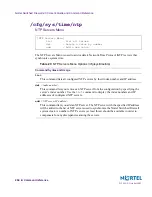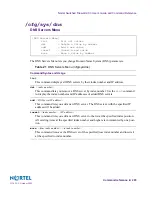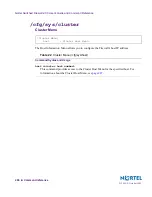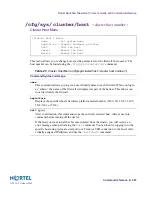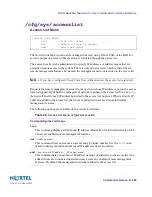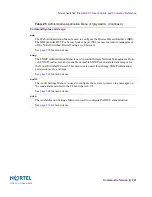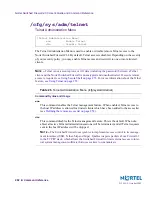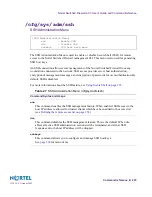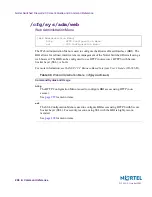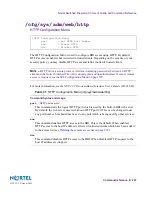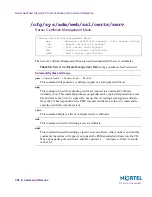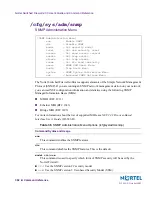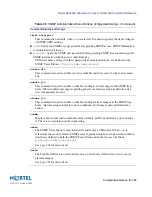
Nortel Switched Firewall 2.3.3 User’s Guide and Command Reference
288
Command reference
213455-L, October 2005
reboot [y|n]
After confirmation, this command reboots the currently selected host. If the host you
want to reboot has become isolated from the cluster, you will receive an error message
when performing the
reboot
command. You can then try logging in to the specific host
using its local serial port (or a Telnet or SSH connection to the host’s individually
assigned IP address) and use the
/boot/reboot
command.
delete
After confirmation, this command lets you remove the currently selected host “cleanly”
from the cluster, and resets the removed host to its factory-default configuration. The
other host in the cluster is unaffected.
To ensure that you remove the intended host, view the current settings by using the
cur
command. To view the host number, type, and IP address for both hosts in a cluster, use
the
/cfg/sys/cluster/cur
command.
Once you have removed a host from the cluster using the
delete
command, you can
only access the device through a console terminal attached directly to its local serial port.
You can then log in using the administration account (admin) and the default password
(admin) to access the Setup Menu.
When two hosts are present in a cluster, you cannot delete a particular host if it is the
only one that has a health status “up.” If that is the case, you will receive an error mes-
sage when performing the
delete
command. To delete an host from the cluster while
the other cluster member is down, see the
/boot/delete
command on
page 365
.
N
OTE
–
Nortel recommends that, after deleting a host, you get the topology using the
SmartDashboard and push the policies to the operational host. Then use the Setup utility
to
join
the cluster.
Table 23
Cluster Host Menu (/cfg/sys/cluster/host
<cluster host number>
)
Command Syntax and Usage

